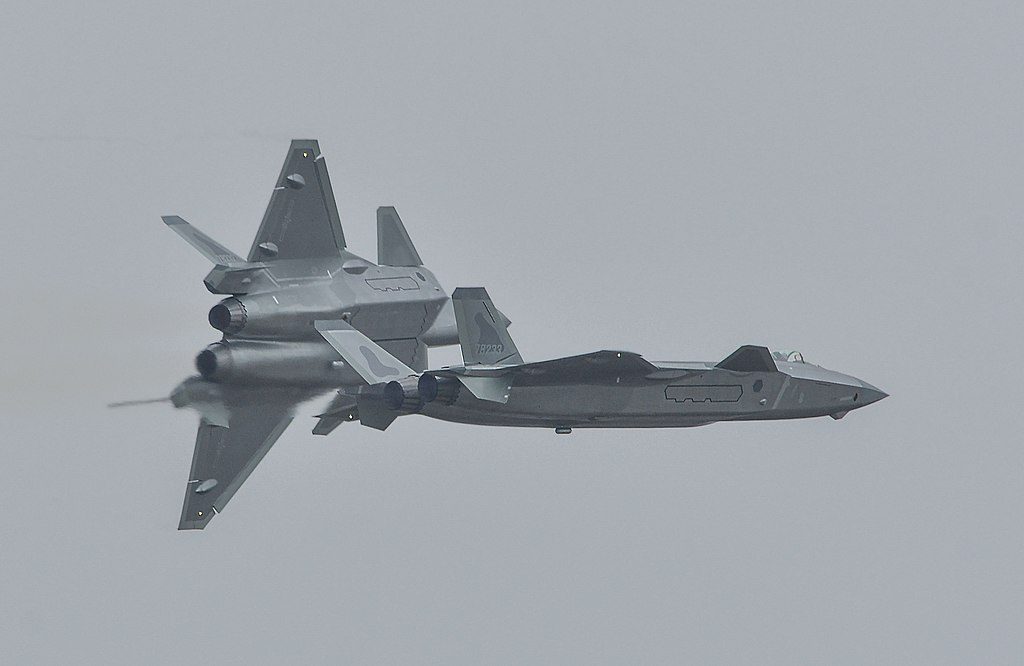
Chinese experts have claimed that Indian, Russian, French and US-origin weapons are no match against Chinese weapons especially the J-20 stealth fighter jet which is decades ahead of any French or Russian jets that India operates.
Adding further to the criticism, the Chinese daily called Russian-made Mig-29s, Su-30s, French-made Mirage 2000 jets and joint Anglo-French Jaguar attack aircraft as popular products on the international market which are no match for China’s domestically developed J-10C and J-16 fighter jets.
It also mentioned that Chinese analysts believe that the country’s J-20 stealth fighter jet has a “generational advantage over Indian aircraft, a gap that cannot be fulfilled by any means.”
China has built a new stealth fighter called the J-20 which entered service in September 2017, and another stealth aircraft, the J-31 is under development. The J-20 is a single seat, twin-engine fifth-generation fighter. It is bigger and heavier than the American F-22 Raptor and the Russian PAK FA T-50/SU-57.
China’s fifth-generation fighter, the J-20 which represents a significant step in the evolution of the Chinese aerospace industry. The new aircraft displays stealth features and indicates a determination on China’s part to shape new military capabilities in the period ahead.
Not many details are available about the J-20’s performance, but from open source information and imagery, a brief assessment can be made of its capabilities. The chined nose and flat lower fuselage can reduce the J-20’s frontal Radar Cross Section (RCS). The J-20’s design also includes front canards which increases its RCS. Canard design is used to improve manoeuvrability, but the disadvantage is that its moving surface increases the radar reflecting surface
China that majorly uses domestic weapons questions India’s internationally imported arsenal and believes that “Indian troops use weapons made from all over the world, which means a high logistical support cost and incompatibility between systems”.
China’s state-run, Global Times (GT) not only ridiculed Indian but also Russian, French and US-origin weapons and claimed that their domestically manufactured weapons were better than the imported ones.
Chinese experts also took a dig at Indian Air force since India has been using the US-made CH-47 Chinook transport helicopters to carry howitzers to the frontline and the AH-64 Apache attack helicopters for anti-tank missions.
Weighting its own superiority over India’s airforce capabilities, the GT wrote – “Chinese military experts said these weapons and equipment are no match for their Chinese counterparts like the PCL-181 and PLZ-05 self-propelled howitzers, Z-10 attack helicopters, and Type 15 and Type 99A tanks, as the capabilities of Chinese weaponry in terms of firepower, mobility, and tactics are far superior, and more so in high-altitude regions.”
However, Indian experts believe that “the Chinese airforce, in all probability, was never built around India as the main threat.”
“Most of its famed bases are located far too inland to serve any practical purpose for an attack on India, let alone defending its border bases. To add to the problem, the few bases that the PLAAF has, which concerns India, are not mutually supportive – if one is attacked, the other does not come in its defence – something the IAF bases enjoy. The distance between Hotan and its nearest support, Kashgar, is approx 400-500 km, well beyond the supporting distance with present-day technology,” writes retired Wing Commander Amit Ranjan Giri.
India-China Border Faceoff
India and China have been in a border standoff since the last week of April in both the Galwan Valley and Pangong Tso. Beijing objects to infrastructure development by New Delhi along the Line of Actual Control and the situation escalated.
India on Tuesday said 20 of its soldiers were killed after a violent clash with Chinese forces a day earlier in the strategically important Galwan Valley on the Himalayan frontier, a dramatic escalation that represents the first combat fatalities between the Asian powers since 1975.
Beijing confirmed there had been casualties in Monday’s clash but gave no further details.
Several news outlets stated that 10 Indian soldiers, including 4 officers, were taken captive and then released by the Chinese on 18 June. India, however, did not confirm or deny these reports and on 19 June, Chinese foreign ministry responded that China “presently has not detained any Indian personnel”.
Thousands of soldiers from both sides have been locked in a standoff in the remote region of Ladakh.
